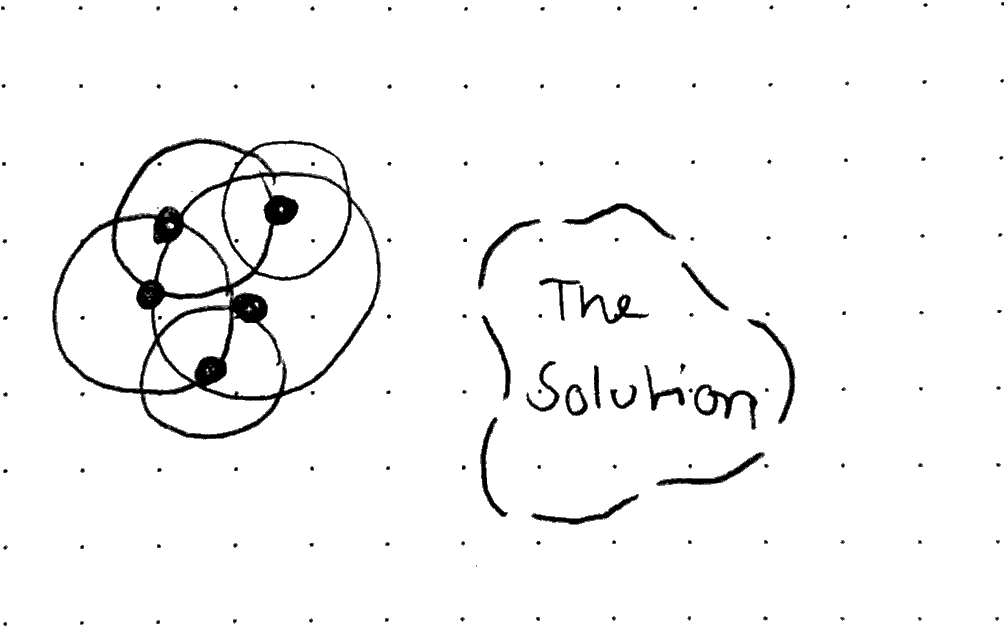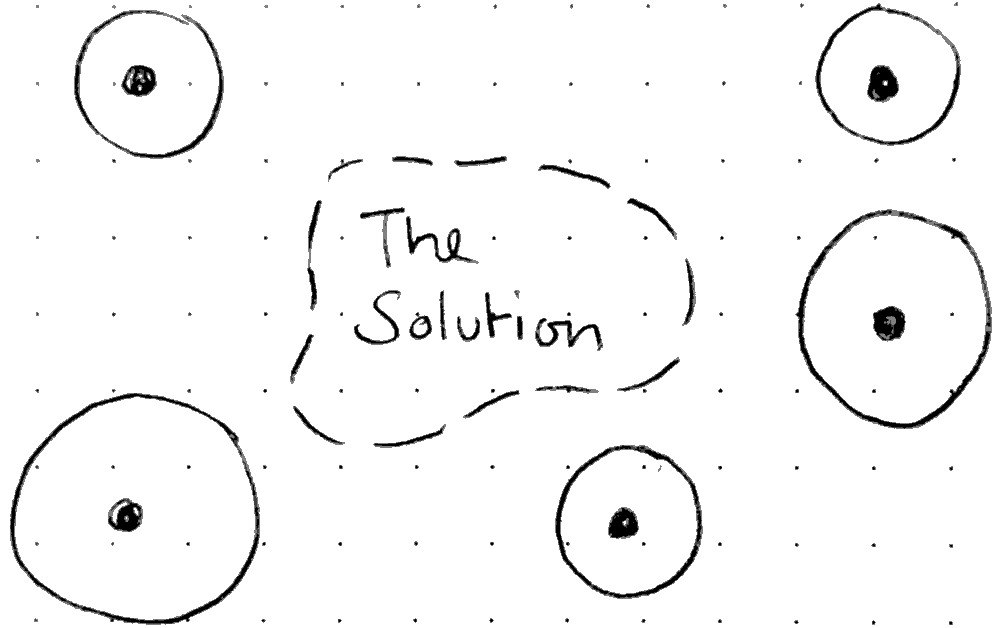Justice, equity, diversity and inclusion (JEDI[1]) have been hot topics for a long time now. At Form Energy, where I work, we highly value humanity and one way this shows is a diverse team. But does diversity work or does it slow you down?
I will try to convince you that a diverse group of people can perform better and be more creative since they can bridge wider gaps of experience than a homogeneous team. This post will equip you with a simple graphical model to emphasise the point.
What Is Diversity?
There are many different ways that diversity can be measured in the context of an organization. Usually you will find ethnicity, gender and gender identity, age, and disabilities on the list. This collection should at least be expanded with education, professional background, and knowledge. The sum of all these features makes up a whole person on a team.
Can We Measure JEDI Effectiveness?
A look at the research on this topic reveals two main groups:
The first group are the big and small consulting firms that want to sell some JEDI. Their studies will show a significant financial out-performance of diverse companies. You will also find the "hidden gems" to get some quick wins[2]. This type of research is usually repeated in the many other articles that largely omit academic papers.
The second group is looking at exactly that: the social science. A recent OECD publication reviewed the evidence if diversity works. The result:
-
No clear financial effect at the company level;
-
Even the regional or country data is ambiguous;
-
An organization valuing JEDI will have access to a bigger and better labor pool since talent is distributed equally across the population
An Argument for Team Diversity
Here is my argument and a simple visual model why diversity works.
-
Each of the big dots in the figures represents a single person.
-
The circles around each dot signify the range of their experience.
-
The two-dimensional space in which they are drawn represents the world. People from very different backgrounds will be further apart.
The first example is a typical top-tier university graduate founder team. They share a very similar education and recent experience, even if they grew up in different places.
This team will usually try to find the best people for their team in a very narrow field: their network. This way, they add more people thinking alike.

With less diversity they might feel more homogeneous internally. They can get a lot done at the beginning. But they are missing out on a lot of space on the map. The team will have trouble solving the hard problems that are outside their experience.
The next picture shows a more diverse team with a wide range of experience. Notice that it does not overlap.

The team does not know what lies in the unknown area between them. But approaching a new problem from many sides can fill this gap quickly.
What else does a great amount of diversity lead to? Communication might be harder in the beginning as the team norms around goals and culture. In the long term it can result in better team cohesion and a stronger, resilient culture.
A colleague reminded me that diversity does not work on its own after he read a draft of this post; You need an inclusive environment that provides safety and trust. Then everyone can bring their true self to work each day.
It’s Not All About The Money or Performance
There is a lot more to a business than making money. Being a good, ethical participant in the physical and social environment is important, too.
A team with equal representation of different people is one step in the right direction. Most importantly, you must have a definition what diversity means for your organization. If everyone is affected by your product, you should have everyone working on it.
Conclusions and Advice
Diversity matters to solve hard problems! Diversity within all aspects: Culture, gender, education, knowledge, different industries…
This model can help you avoid groupthink when working together. Include some non-experts in your stakeholders to get fresh perspectives. Foster this with a safe, trusting environment.
You can use the concept to overcome an in-group bias when building teams. Aggressively seek new job-candidates or co-founders that are very different.
JEDI does not happen on it’s own! The easiest way to form a diverse, creative team with a welcoming culture is when the whole team builds it from day one.
I try to follow these rules every day. It’s not easy but our team shows that it’s worth it!